© Christoph Petermann DF9CY 2011
Last Revision: 18 May 2011
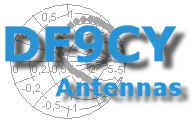
This is the first working sample of the extended 6 element ZX-Yagi
(now 7 elements) built by Sönke DL3LE
Intention
With a little additional material you are able to extend the
ZX-Yagi 6 Elements for 50 MHz by about 2 meters. The gain rises
about 0,8 dB.
The antenna is very rugged and heavy (ca 20kg). Hopefully this
helps against the raven birds and the 160km/h wind gusts.
Antenna Dimensions
The antenna has been carefully calculated with EZNEC 5+. All
dimensions differ slightly from the original ZX recommended sizes!
The performance has been "tweeked" a bit.
The additional element makes the antenna to be over 8m long now.
Therefore the antenna boom shall be supported by a rope for
example.
You can take the dimensions from the wires spreadsheet below.
Transfer these values carefully; it is your benefit.
DOWNLOAD a PDF description
here !
The wires Spreadsheet
Here are the dimensions of the 7 Element antenna for 50 MHz.
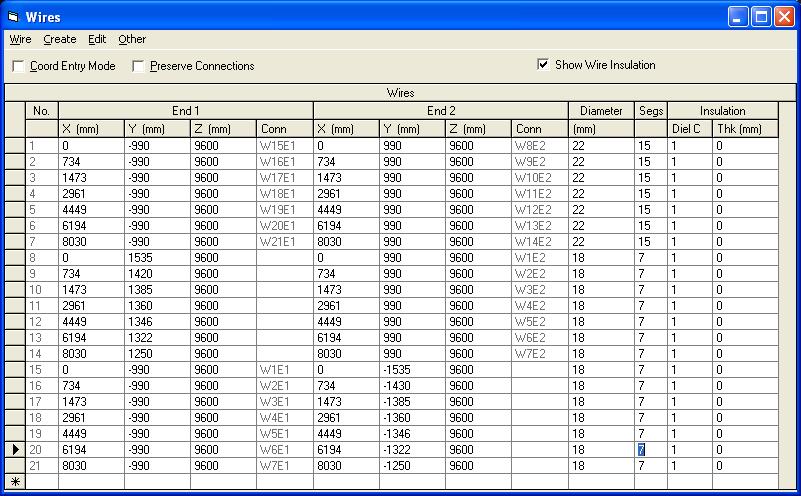
The centre portion of the elements has a diameter of 22mm and a
length of 1880mm. The end portion has a diameter of 18mm. Take the
length from the table above.
DOWNLOAD a PDF description
here !
An antenna view from EZNEC.
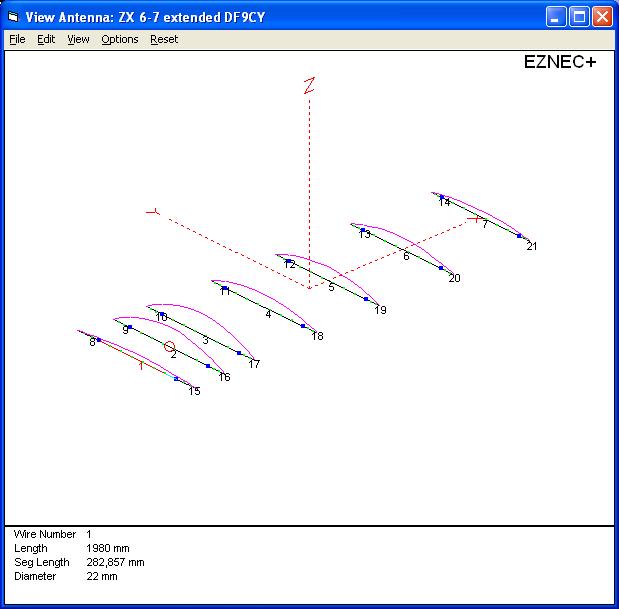
Performance
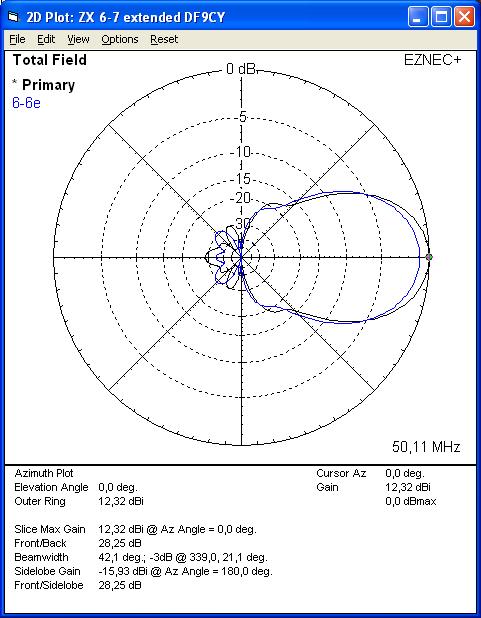
Azimuth diagram. Note: For comparision you see the blue curve
with the gain of the original 6 element antenna (ZX6-6)
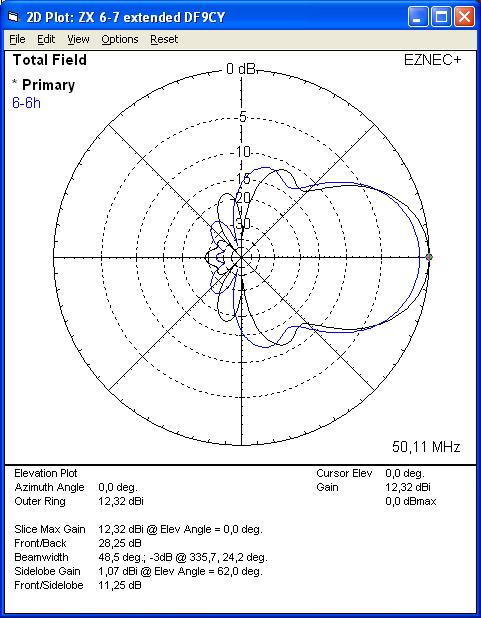
Elevation diagram. Note: For comparision you see the blue curve
with the gain of the original 6 element antenna (ZX6-6)
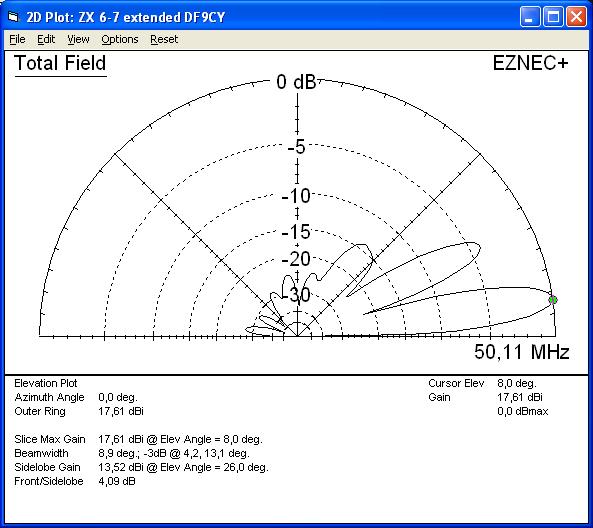
The 7 element antenna as it would perform at 9.6m above ground.
(This is where the antenna could be on my tower - not very high
though)
Stacking the antenna
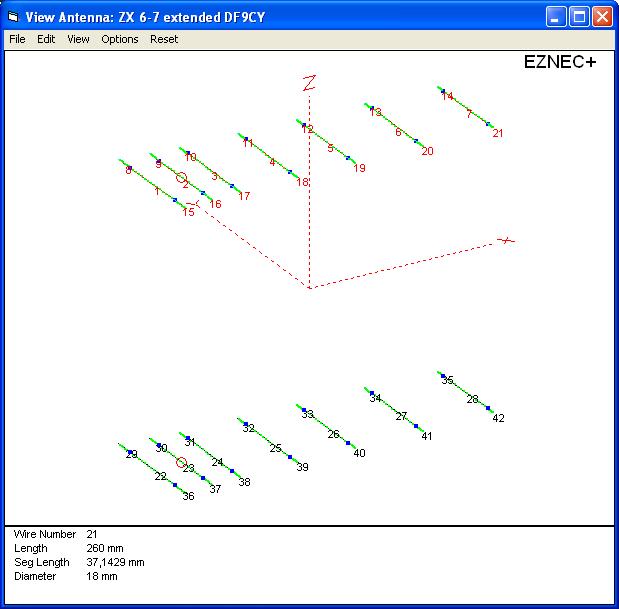
Two 7 element antennas in a stacked position.
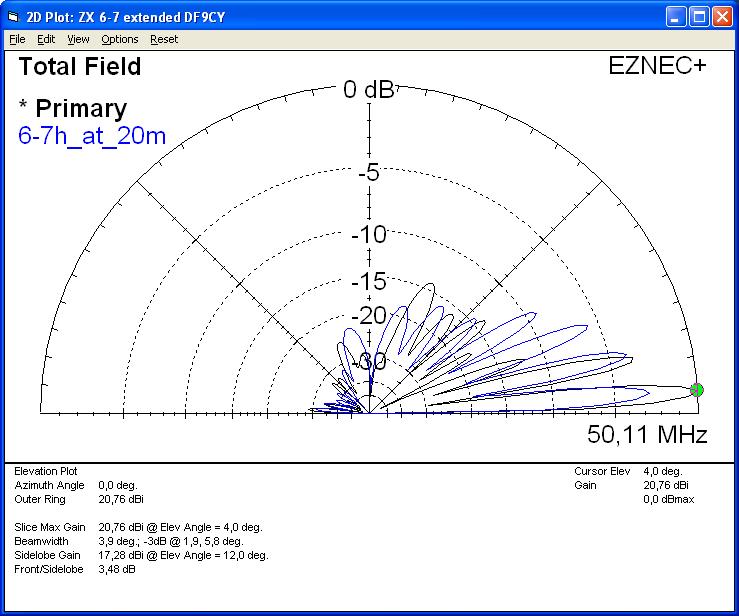
Gain of the stacked antenna system over real ground simulation.
The gain will be almost 20,8 dBi with a very good F/B ratio. The
blue curve shows the gain of a single antenna at 20m above
ground.
This stack will make a very good DX antenna. It performs best at
very low angles - where the DX is expected. Vertical sidelobes are
suppressed strongly. THIS also means that Sporadic E operating is
not the first target of this antenna. You might experience even
poor performance during Sporadic E openings. Eventually a second
smaller antenna on a SEPARATE and eventually lower tower (10m) or
roof might be helpful. DXers do this.
The first antenna is up "in the air" and is performing as
expected.
| 
